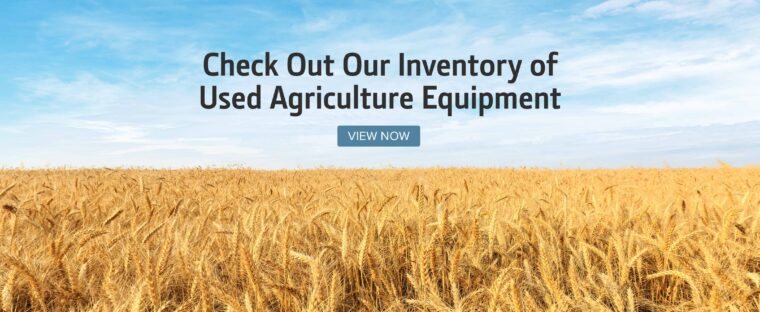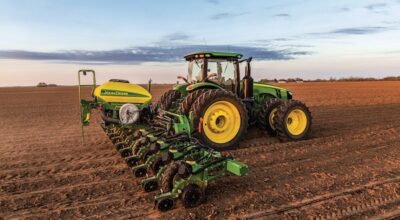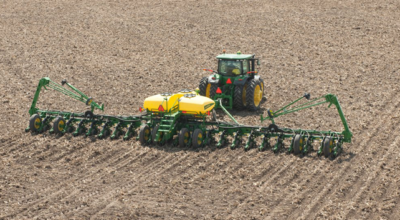High-acreage operations rely on planters that can keep up with demand — and deliver precision at scale. The John Deere DB80 Planter series checks both boxes, built for efficiency with an 80-foot toolbar and row-unit technology that supports consistent, high-speed planting.

Within the lineup, the 32Row30 and 48Row20 models offer two distinct approaches to getting seed in the ground. Their configurations may seem like small variations, but they impact everything from crop selection to horsepower requirements. Understanding the differences can help you choose the right fit — and make the most of every pass across the field.
Understanding the John Deere DB80 Planters
The DB80 series is designed for operations that prioritize speed, scale, and planting precision. Both the 32Row30 and 48Row20 share the same robust frame and are compatible with advanced planting technologies — but the numbers in their names reveal how differently they operate in the field.
The 32Row30 configuration includes 32 rows with 30-inch spacing, while the 48Row20 model features 48 rows spaced 20 inches apart. That single design change affects row count, planting strategy, and equipment requirements — making it a key factor in choosing the right model.
The DB80 32Row30 VS The DB80 48Row20: Key Differences
While both models are built for scale, several design details affect how they perform in the field. Here’s how they compare across row configuration and spacing, seed hoppers, row-unit technology, and tractor horsepower.
Row Configuration and Spacing
Row spacing shapes everything from crop emergence to canopy development. The 32Row30’s 30-inch rows are ideal for crops like corn, where airflow, light penetration, and ease of in-season access are critical. This configuration also simplifies residue management and works well with a wide range of equipment.
The 48Row20’s 20-inch spacing supports denser plant populations, which can benefit crops like soybeans. The tighter layout promotes faster canopy closure and can help suppress weeds, but it may also require closer monitoring for disease due to reduced airflow.
Seed Hoppers
Both DB80 models support mini-hoppers, 1.6-bushel, and 3-bushel options. Larger hoppers reduce downtime during planting — especially important when working against a tight schedule. Your choice depends on whether you’re focused on minimizing refills or optimizing in-field weight distribution.
Row-Unit Technology
Each planter is compatible with ExactEmerge™ and MaxEmerge™ 5e row units, which help improve seed spacing accuracy and planting speed. These technologies promote uniform emergence and better seed-to-soil contact. Both models support these innovations, so your decision comes down to which row configuration aligns with your planting targets.
Tractor Horsepower
Power requirements scale with planter width and row count. The DB80 32Row30 requires a tractor with at least 300 horsepower, while the 48Row20 may need 350 horsepower or more. Make sure your tractor fleet is ready to support the model you choose without affecting performance in the field.
How Row Configuration and Spacing Affect Planting
Row spacing plays a central role in planning your planting strategy, and it affects your choice of planter, too. From residue levels and equipment compatibility to planting efficiency and crop fit, here are a few factors to consider:
Crop Suitability
The 32Row30’s wider rows work well for crops like corn, allowing for stronger root development and easier access for field equipment. Meanwhile, the 48Row20’s tighter rows are often used for soybeans, small grains, or specialty crops that benefit from higher populations and quicker canopy closure.
Residue Management
The 48Row20’s narrower spacing increases residue concentration between rows. This may require additional tillage or specialized tools to maintain a clean seedbed. The 32Row30, by contrast, allows more space for residue to settle, reducing planting challenges in high-residue fields.
Equipment Compatibility
Your current equipment setup matters. If your sprayers, cultivators, or harvesters are calibrated for 30-inch spacing, the 32Row30 will likely fit right in. If your farm already uses narrower rows, the 48Row20 may align with the rest of your machinery more naturally.
Yield Potential and Planting Efficiency
The 48Row20’s narrower rows offer the potential for higher yields by supporting denser plant populations and improving light interception. However, they demand tighter management and may stress equipment. The 32Row30 offers a more balanced approach, with easier access and proven in-field efficiency.
Which DB80 Planter is Right for You?
Selecting the right DB80 model depends on how your farm is set up and what you prioritize in the field. If you grow wide-row crops like corn or want traditional spacing with broader equipment compatibility, the 32Row30 is a reliable fit.
If your focus is on narrow-row crops like soybeans, you want to maximize population density and you have the equipment and power to support a heavy-duty planter, the 48Row20 can offer a yield advantage. Evaluate your crop mix, horsepower availability, and management approach to find your ideal match.
Get Planting With Confidence
Choosing between the DB80 32Row30 and 48Row20 comes down to your farm’s specific needs. If you’re looking for wide-row planting and traditional equipment compatibility, the 32Row30 is a reliable choice. But if maximizing plant population and yield potential is your goal, the 48Row20 may be the better fit depending on your crops.
Find the right John Deere DB80 Planter for your operation by visiting your local John Deere dealer today.




